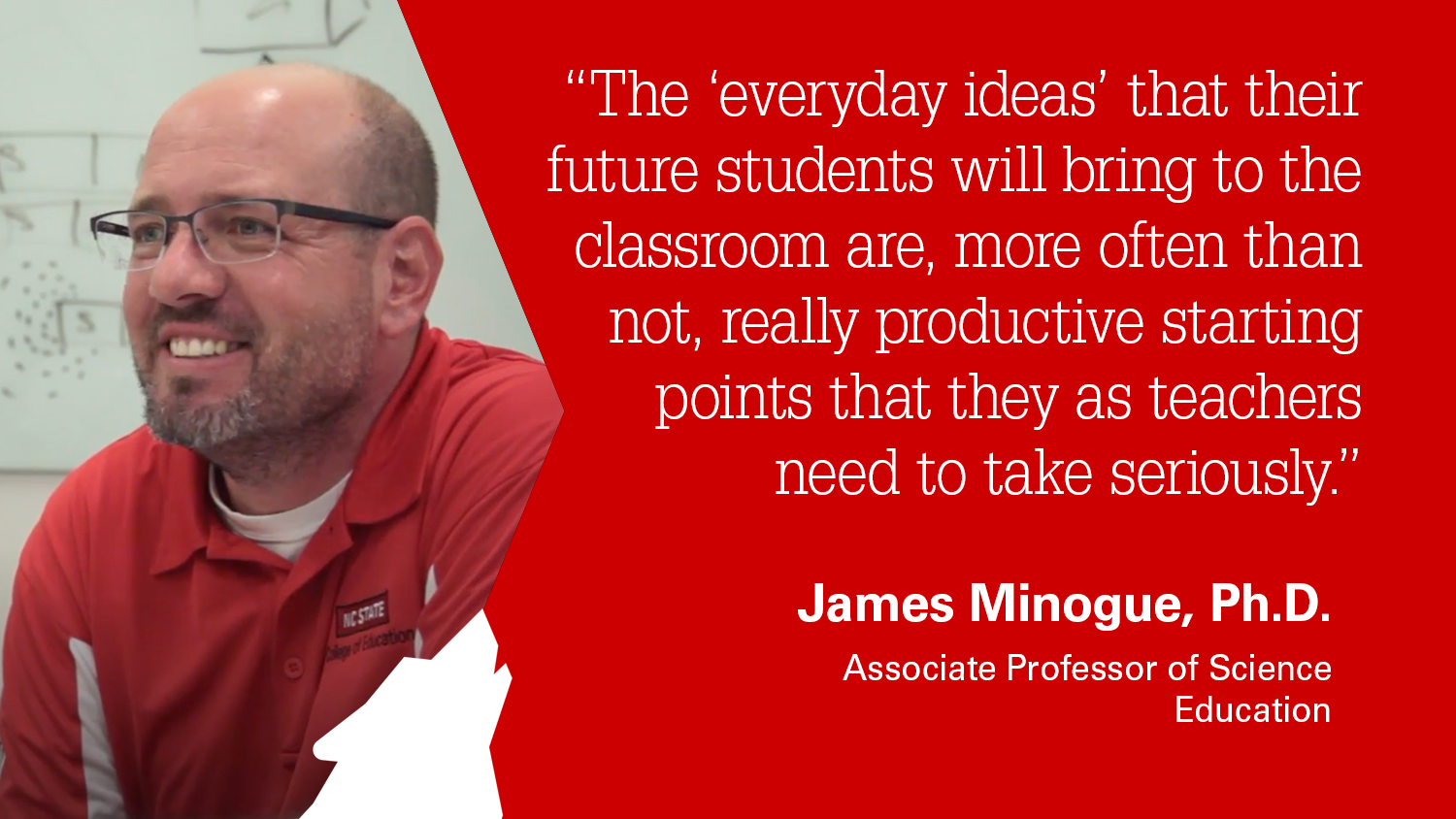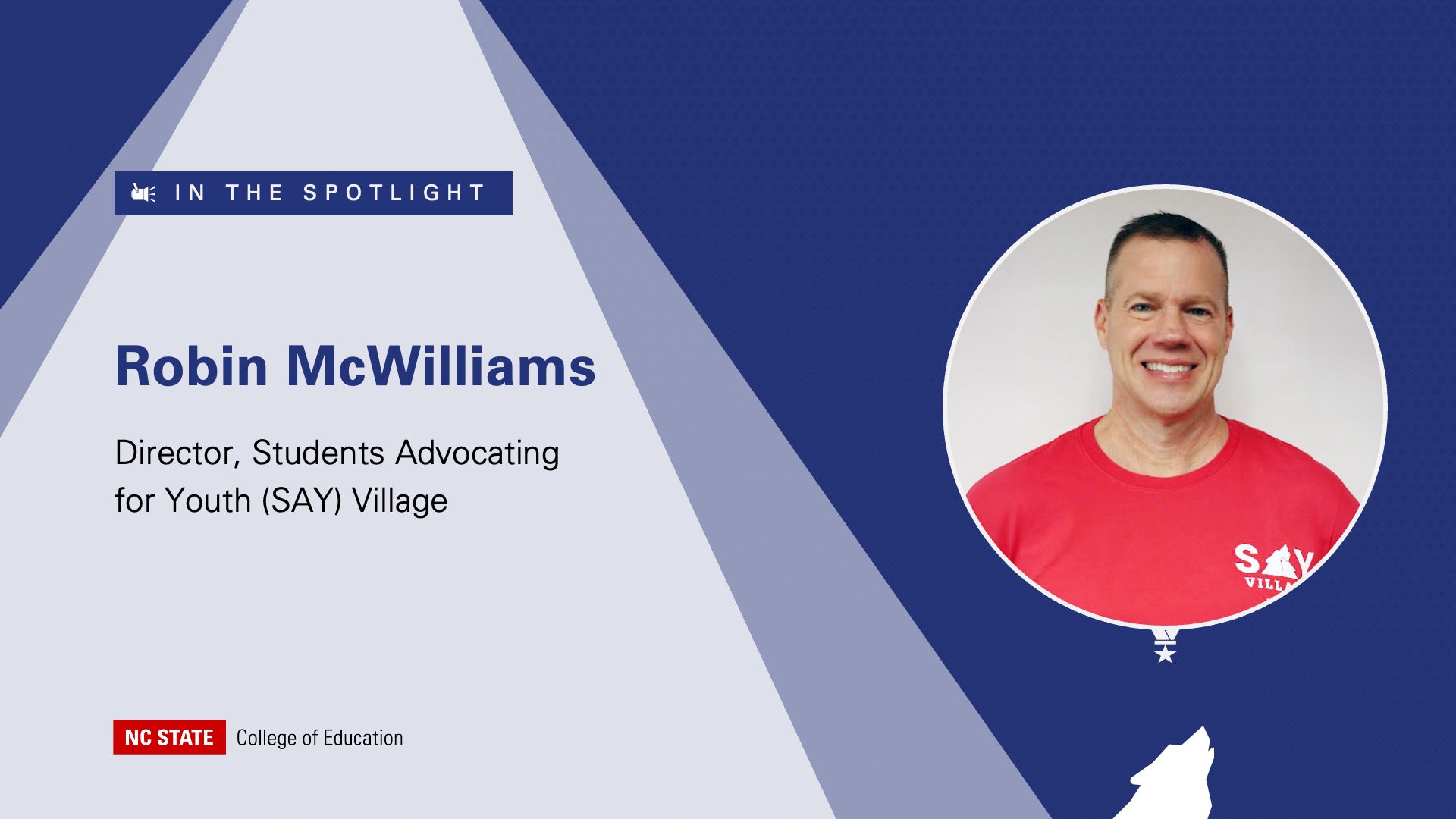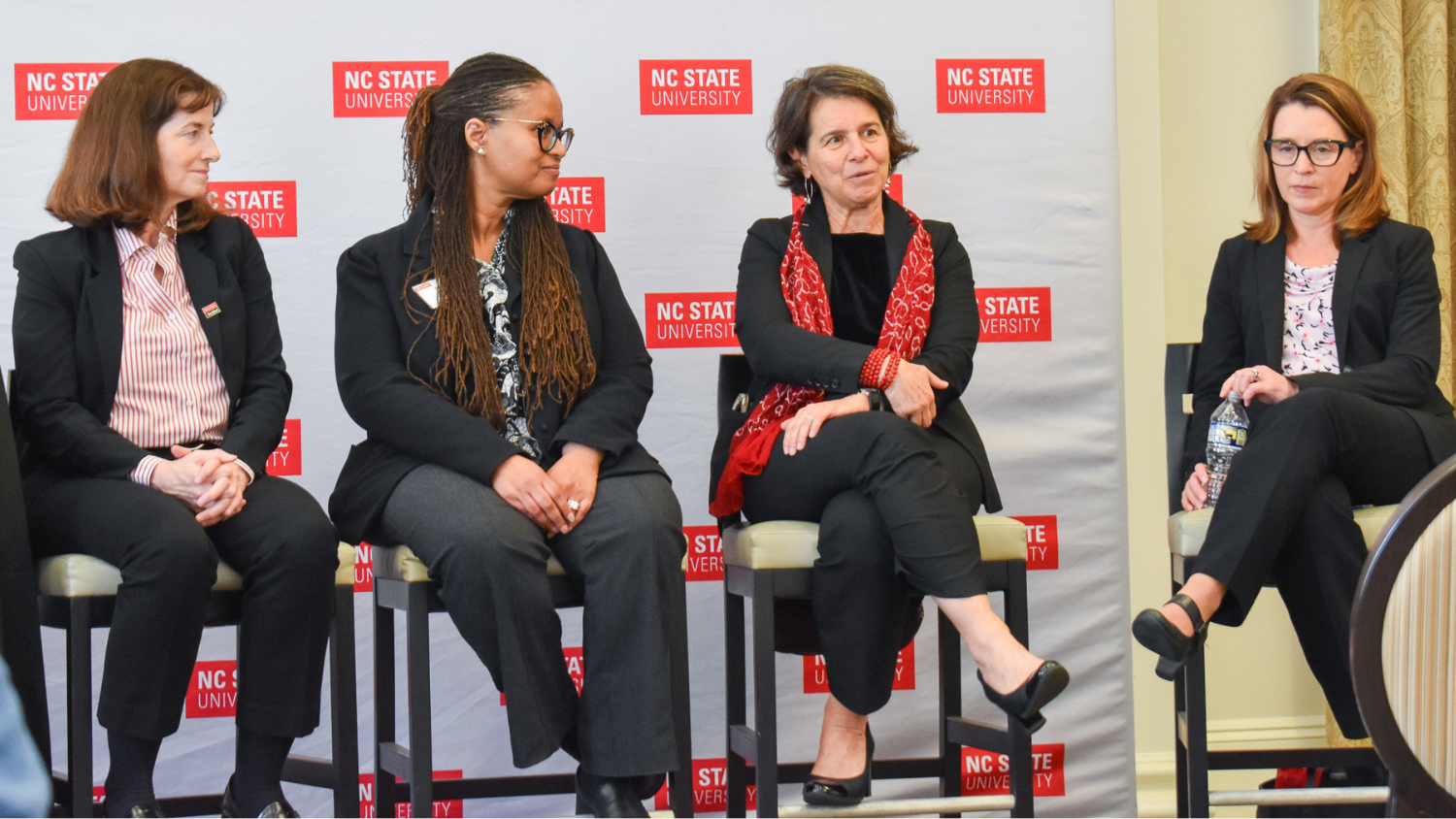Associate Professor James Minogue: ‘The Best Teachers Provide Their Youngsters With Opportunities to Learn That Help Their Ideas Progress in Sophistication’

During nearly 15 years of teaching science methods courses to students in the elementary education program, NC State College of Education Associate Professor James Minogue, Ph.D., has noticed that many aspiring elementary school teachers tend to shy away from teaching science.
Many undergraduate students, he said, seem to believe that they need to be an expert in all areas of science in order to teach it well, so he tries to dispel this idea for them on the first day of class. He focuses on helping his students understand how science can be both fun and unintimidating and on reminding students that it’s OK if they need to brush up on and re-learn science concepts before they teach them in a classroom setting.
“I tell them that I have a Ph.D. in science education but that I still have huge gaps in my understanding. I suggest that actual scientists know a lot about their particular area of study, but they too likely don’t know all there is to know about how the world works,” Minogue said. “There is just too much to know and remember, no one expects you, as a teacher, to be walking around with fully formed, scientifically acceptable explanations of all the concepts you will be teaching. It’s impossible.”
Minogue himself did not initially plan to become a science teacher. As an undergraduate, he was a dual major in biology and marine science and wanted to go to graduate school to become a marine biologist. Instead, he stayed an extra year to earn his teaching license in science education and never looked back.
He eventually enrolled in the College of Education to earn his doctoral degree in Learning and Teaching in STEM in the science education program area of study. It was during this time that he took on a research assistantship with Alumni Distinguished Graduate Professor Gail Jones, Ph.D.,
Jones was working on research related to haptic technology — technology that can create the experience of touch by applying forces, vibrations or motions to a user — and Minogue said that he immediately recognized the pedagogical power of enabling students to “touch” things they would not normally be able to see and feel in a classroom.
“We ask youngsters to reason about things they can’t see or experience directly and the idea of hands-on teaching is pretty impossible in a lot of cases. Being able to interact with the invisible aspects of science, be it the permeability of a cell membrane, the upthrust of a buoyant force or a magnetic repulsion, can be incredibly exciting to experience, but we also believe that it helps students learn more deeply,” he said.
For the past three years, Minogue has served as the principal investigator on the cross-disciplinary PERCEPT project to reimagine physics teaching for pre-service educators by developing a new model of teaching and learning core concepts through haptically-enabled science simulations — virtual representations of real-world systems modeled computationally, displayed visually and augmented with haptic force-feedback.
Early results from the project have shown that haptic force-feedback helps learners move beyond seeing concepts at the macroscale and help them to understand ideas at the microscale.
For example, Minogue said that students who were asked to draw a picture of how ice melts before participating in the simulation would often draw a piece of ice, the sun and a puddle. After participating in the haptic force-feedback activity, more students depicted what happens to melting ice at the molecular level, including particle arrangement and water molecule bonds breaking and moving faster as temperature increases.
Minogue has also found that haptic force-feedback can influence the way pre-service teachers think about how to teach seemingly simple concepts, such as sinking and floating, and develop fuller understandings of how to teach those concepts well.
“Despite our lifelong experiences with sinking and floating, it is actually quite complex to fully understand. One needs to consider the relationships among a number of factors including the object’s mass and volume, the density of the fluid and the amount of water displaced by the object,” Minogue said. “We have found that our haptic force-feedback helps folks move beyond ‘knowledge in pieces’ that focuses on only one factor, to relational and mechanistic explanations that integrate multiple factors into a more coherent whole.”
Minogue said the next step is to apply the haptic force-feedback technology to lessons about human anatomy and physiology. This application, he said, will be able to unite biology and physics in a meaningful way and could provide learners with opportunities to virtually “feel” phenomena like blood moving through veins under different pressures or the way bones and muscles actually do work as levers.
He hopes the students who take his courses understand that this type of inquiry-based science is not a teaching strategy, but a philosophy. He wants his students to know that there are many approaches to inquiry-based lessons, and he often tries to share these approaches through his own lessons.
“Dr. Minogue makes his classes so much fun, really engaging us with the instructional materials and allowing us to complete a science activity that we can then use in our own classroom,” said Sophie Moffatt ’22. “I’m really grateful to have had the chance to have him as my professor because I absolutely love the assignments we have done and it is obvious that he cares for the wellbeing and futures of his students.”
Moffatt said she enjoyed using tools like Drawing to Learn to better understand how sketches and graphics can enhance science learning, but her favorite assignment was a midterm that required students to create and plan an informal science activity. Moffatt planned a trip to the North Carolina Museum of Natural Sciences and said she learned a lot about how field trips can be used to enhance instructional material learned in class.
Maddy Leen ’21 said she appreciated how Minogue would bring science activities and resources to every single one of his classes, which she believes helped to push her understanding of the science content and provided her with the tools she needed to be an effective science teacher.
“You can not get enough of those science experiences, they’re one of the best ways to teach science and they’re one of the best ways for young kids to learn science,” she said. “Having that experience, being the student going through some of these science kits and experiments, just really helped me to be more well prepared as a teacher to use these in my classroom.”
As Minogue helps prepare undergraduates to one day lead their own classrooms, he wants them to learn to embrace the “everyday ideas” that their students might share related to science.
Rather than label elementary students’ inaccurate knowledge as “misconceptions,” Minogue says he wants future teachers to embrace students’ initial explanations, or “everyday ideas,” which are the product of their limited experiences and personal reasoning.
“The ‘everyday ideas’ that their future students will bring to the classroom are, more often than not, really productive starting points that they as teachers need to take seriously. The best teachers provide their youngsters with opportunities to learn that help these ideas progress in sophistication,” he said.
- Categories:


